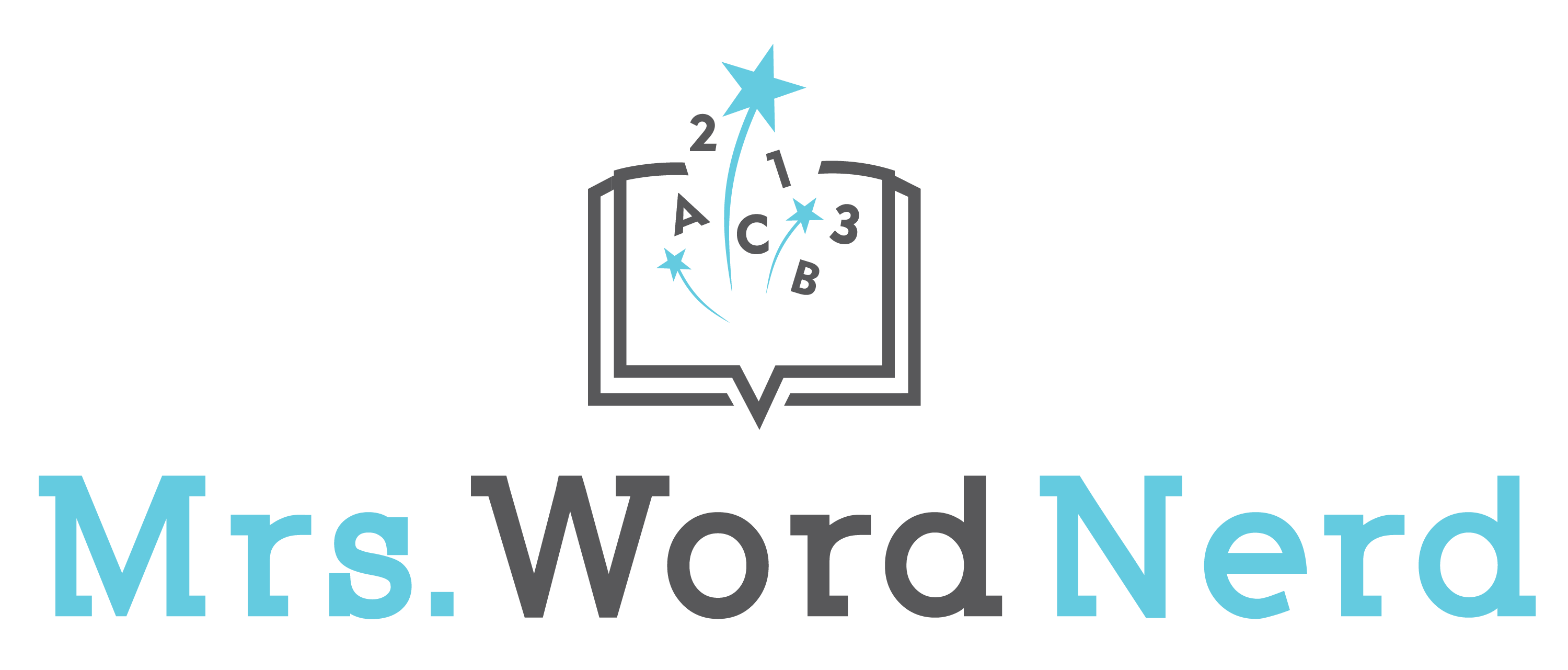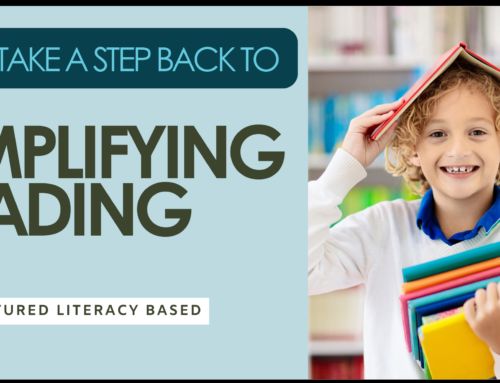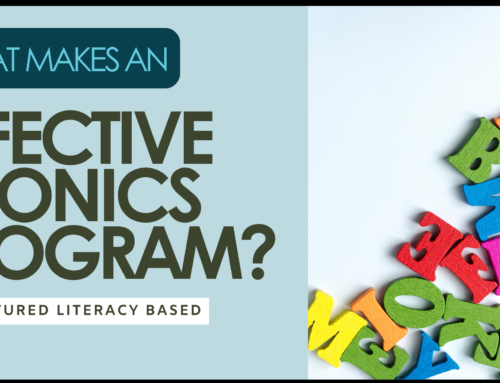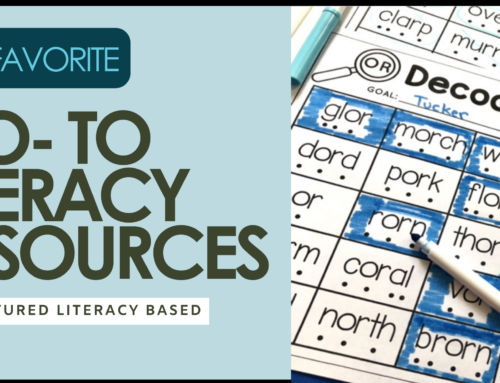It seems like more and more you have to wade through information to get what is really true about science of reading research. I wanted to explore 8 key myths I see keep showing up. So let’s begin…
Myth 1: Science of reading is just the latest “fad”.
If we look at how long this research has been going on, it is clear it IS NOT a fad. Maybe throwing around the phrase “science of reading” is, but the research has been in the works for the last 30+ years. Just look at the Simple View of Reading formula- it was first introduced in 1986. Even back when the National Reading Panel came out with the No Child Left Behind Act, the term science-based reading research was what it referenced.
Myth 2: Science of reading is a curriculum
Again false. It is a body of research.
People and companies are claiming they have a science of reading curriculum, but to have that in a nice packaged bundle doesn’t exist. That would be a dream. You can have parts of a curriculum that are based on the science of reading research. Also, so much of it involves teachers’ knowledge about reading and that can’t be purchased as a curriculum. As with anything being researched, things are evolving: the importance of teaching syllables has been in question, the importance of background knowledge, effectiveness of Heggerty or assessing phonemic awareness – just to name a few.
Myth 3: Science of reading is just about phonics.
As someone who loves phonics and got into this research because of it, I would love it if this one was true. It would make it so simple too! We can all just learn the phonics rules, teach them to our students and BOOM everyone is now a reader. Yet, the science of reading is about ALL the skills needed to be a reader. Transitioning from a balanced literacy approach to a structured literacy approach creates a great shift in how to approach teaching phonics with explicit and systematic instruction rather than more of an exploring approach. The thought is now “Explicit teaching of alphabetic decoding skills is helpful for all children, harmful for none, and crucial for some” (Snow & Juel, 2005). So rather than just struggling students getting this instruction, all students receive this instruction as it helps with encoding and writing skills.
Myth 4: Science of reading kills the love of reading or only allows students to read decodable text.
Okay, this is kinda of two myths in one. Yes, the research says to use decodable text to help students practice applying the phonics skills they are learning to their reading and writing. Nowhere in the research does it say that students should only use decodable text. If we want readers to be skilled readers they need to apply their reading skills outside of the controlled environment decodable books present. Students need lots of practice to want to read more than decodables- some more than others.
Think of it this way- do you like to do something you aren’t good at? Well, our students don’t either. So the science of reading is helping get more students to the love of reading as it is equipping them with the right skills. The goal is to have students read whatever text they would like, whenever they like which in my opinion is what having a love of reading is. We just need lots of practice to get there.
Myth 5: Learning to read is a natural process.
Let’s let Dr. Moats and Dr. Eden take this one:
“Learning to read is not natural or easy for most children. Unlike spoken language, which is learned with almost any kind of contextual exposure, reading is an acquired skill” (Moats, L.2020).
“Our brains aren’t pre-wired to translate letters into sounds. We learn to read by repurposing parts of the brain meant to do other things — visual processing, language comprehension, and speech production.” (Eden, G How Reading Changes the Brain).
As teachers, we literally help students use their temporo-parietal cortex, inferior frontal cortex and occipito-temporal cortex in new ways and create connections between them to read words and say words and know what they mean.
Myth 6: Any child can read if given enough time.
Oh, yes… the great wait-and-see approach, or just give them time. In my 14 years of teaching, I have seen this approach work once. It was for a student who had the decoding skills but lacked fluency. They need more time than most students to work on putting all the skills together but that was with the help of a knowledgeable teacher and knowledgeable reading tutor.
Learning to read is not a set of skills students just pick up over time. See myth number 5. As teachers, we are helping students rewire parts of their brains. Time no matter how much time is given will make that happen unless students are taught correctly.
Myth 7: Reading is a visual process.
Yes, reading does include a visual process or seeing words and translating them to speech. Saying it is just a visual process ignores the whole comprehension piece of reading where we derive meaning from the words and sentences we read.
Saying this also ignores the fact of how we use our brains when reading.
Myth 8: I don’t need to use the science of reading, what I’m doing works for my students.
Unless you can show the data that all your students are reading at grade level or above when they leave your classroom, I would say we have room for improvement. Going back to 1992 with the NAEP Achievement, the percentage of students, nationwide, who were proficient or above in reading at the fourth-grade level has maxed out at 37%. More often than not less than a third of fourth graders are reading at that level. So we all have some serious work to do to make that change. You can look at the data here.
Wrapping It Up
I know there are even more myths that continue to circulate about the science of reading research. Hopefully, this gives you some talking points to present when you hear these said. This is not an easy task to change our teaching to align with the research so I get the resistance and over generalizations about what the research can do. All we have to do is look at myth number 8 to see there is so much work to still do.






Leave A Comment